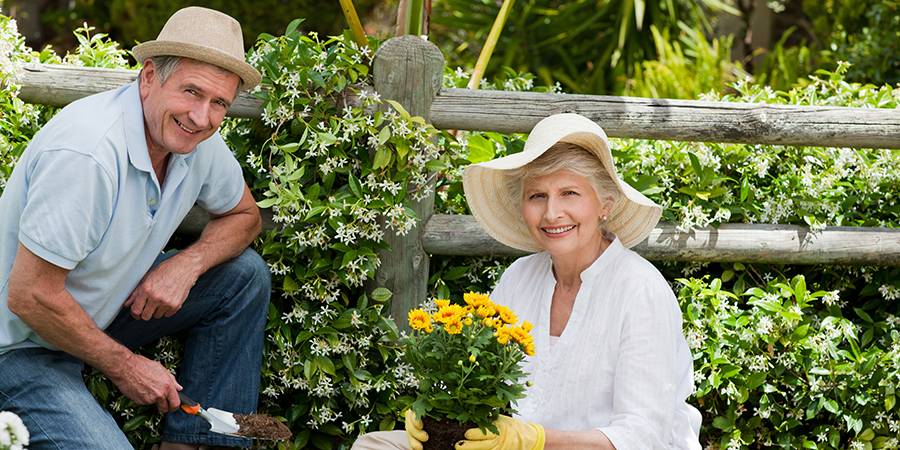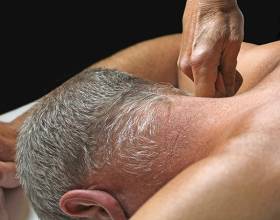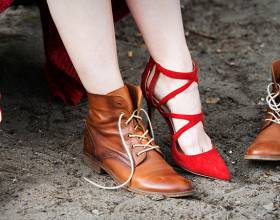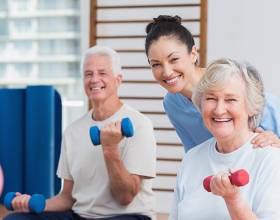Ergonomic Tips Make Healthy Gardeners

“Gardening is a source of pleasure and exercise but don’t overdo a session.”
“We must keep in mind that the most important gardening tool we have is our body. When we begin to hurt, it takes us away from the activity we enjoy so much, so it’s worth the time and effort to learn to garden ergonomically. Proper body positioning, well designed gardening gloves and tools and frequent rest breaks are the keys to being a healthy gardener.”
Preparation for Gardening:The Warm-up
You wouldn’t play basketball or softball without warming up, so why would you garden without warming up. Gardening is a very physical activity requiring use of the entire body. Proper preparation is the next facet in injury prevention. Spend 10 minutes doing a warm up.
Gardening Ergonomics: Neck
- Keep your work close to you. Minimize reaching. Use long handled tools instead of reaching.
- Maintaining your head and neck in an extended position (looking up) for more than five minutes at a time will create tremendous fatigue.
- If you must work with your arms extended out in front of you, don’t round your shoulders. Keep your shoulder blades pulled together.
Gardening Ergonomics: Knees
- Use kneepads to protect your knees.
- Ice your knees for 15 minutes after you garden.
Gardening Ergonomics: Shoulders
- Work below shoulder level when possible. When that is unavoidable, perform the task for five minutes or less.
- Use both arms whenever possible.
- When necessary to work above shoulder level, perform the task for five minutes or less; then take a break or perform another activity before continuing.
Gardening Ergonomics: Back
- Put leaves and garden debris on a canvas tarp and slide along the ground to eliminate lifting.
- Introduce raised beds, containers and trellises – bring the garden closer to you – the closer your garden is to waist level, the less bending and the less strain on your lower back.
- Furrow rows with long PVC pipe cut at a slant on one end; drop seeds through the pipe to plant.
- Alternate sitting and standing positions at 30-minute intervals.
- Keep your work close to you. Minimize reaching. Use long handled tools instead of reaching.
- Digging should be done with intermittent breaks in order for your body to rest from the repetition.
- Bending over for any length of time can very quickly become painful to the lower back and legs.
- Ice your back for 15 minutes after you garden.
Gardening Ergonomics: Elbows
- When possible, work with the forearms in a neutral position (i.e. thumbs up).
- Keep the elbows partially bent while gardening, especially when doing resistive activities requiring elbow strength.
- Keep your wrists straight (in line with your forearm) when pushing, pulling and grasping. This decreases the tension on the elbow and wrist.
- Avoid twisting the forearms back and forth on a repetitive basis (example: pulling weeds by twisting the forearm palm up and then palm down). Consider using a weeder.
Gardening Ergonomics: Wrists (Grip)
- Rules of “thumb”: 1) thumb and forefinger should meet when wrapped around a handle, and 2) indentations in tools should encourage the neutral position (thumb up, wrist straight).
- Work with wrists in a neutral position by avoiding the extremes of motion (up, down, and sideways).
- Hold objects with a light grasp or pinch, avoiding a tight, sustained grip.
- Keep your wrists straight (in line with your forearm) when pushing, pulling and grasping.
- This decreases the tension on the elbow and wrist.
- Grip strength is at its maximum when the wrist is in a relaxed or “neutral” position. People lose up to 25 percent of their grip strength when their wrist is bent.
- Avoid repetitive pinching and pulling with the finger and thumb.
Gardening Ergonomics: Gloves
- Always use gloves. Not only do they protect against cuts, scrapes, chemicals and blisters, they also provide padding.
- Gloves should be made of material appropriate for the specific task (example: gloves for working with chemicals as opposed to gloves for pruning rose bushes or working with the soil).
- Gloves should be form fitting covering the smallest area of the hand possible, without being restrictive.
- Thin gloves are preferable even though they will generally not last as long. Too much padding will decrease the feeling in the hand and decrease hand strength by as much as 30 percent. This decreases overall hand coordination and power grip.
Gardening Ergonomics: Tools
- Choose the proper tool for the task at hand.
- Look for ergonomic tools. Just because the tool says it is “ergonomic” does NOT mean it is ergonomic for you! It must fit YOUR body.
- Try out tools before you buy because handle size, weight, and length of spindle are all key when it comes to using a tool.
- Telescopic and pistol-grip handles require less energy and keep the body in proper alignment.
- Handle diameter is important. For some people, a fatter handle feels more comfortable at the wrist. However, a fatter handle will fatigue your grip more quickly.
- Look for a depression in the handle for your thumb. This keeps your hand in proper alignment.
- Shorter tool handles provide greater leverage control (best for small hand tools).
- Use long-handled tools to reduce strain on your back, knees and hips instead of reaching.
- If tools have wooden or metal handles, consider adding padded tape or pipe insulation foam. You can also modify the grip on your favorite tools. To determine the size of your grip, make a circle with your thumb and index finger. A bicycle grip, baseball tape, foam, and electrical tape all can be used to pad the handle.
- Keep blades sharp and oiled. Dull blades require more force to get the same job done.
- Load tools, supplies, rocks and other heavy items onto a vinyl snow sled; pull it around to work stations. A wheelbarrow is another option.
- In a need to get your tools and other materials to the designated area don’t aggravate your body by trying to carry everything at once. Make several trips.
- Be aware of the dangers from gardening tools and equipment. Don’t leave tools or hose pipes in places where they are likely to cause an accident.
Gardening Ergonomics: General Tips
- Gardening is a source of pleasure and exercise but don’t overdo a session. Plan for breaks and switch tasks often. Move from an intensive task to a light activity after 30 minutes. If you experience pain, stop working.
- Rotate activities. Muscles will typically fatigue in less than a half hour of repetitive activity; therefore, rotate each gardening activity with ones that require different muscle groups and different body positions. Spread the gardening tasks over a number of days versus performing all of them the same day.
- Let your daily physical activity level serve as your guide for how long you can garden. For example, if you are physically active one hour a day, you should be able to garden an hour a day. Even if you do not feel fatigued, take a break for a few minutes each hour.
- Wide garden paths allow for safer walking and favor use of labor saving wheelbarrows, carts and dollies.
- Think about who uses the garden when designing features such as a steps, paths or ponds. Will it include elderly people or young children? A steep drop from one level to another can be an accident waiting to happen. Be careful of uneven surfaces.
- Water weighs more than 8 pounds per gallon; so design your garden with easy access to hoses and water sources. Consider an efficient automated drip or soaker hose system.
- Be sure to drink plenty of water to avoid dehydration while you are gardening.
See Also

Trigger Point Therapy: What is it and how does it work?
How does it work? Based on the pioneering studies of Dr. Jay Shah and colleagues at the National Institute of Health, we know that inserting a needle into a trigger point can cause favorable biochemical changes which assist in reducing pain. It is essential to elicit so-called local “twitch” responses, which are spin...

Physical Therapy and Shoe Wear
Wellness and Therapy: Physical Therapy – Physical Therapists are movement specialists. Feet give us the foundation for support of our body. Your feet are comprised of 33 joints, more than 100 tendons and 26 bones. The foot is designed for propulsion and support. What we wear on our feet is importan...

How Much Physical Therapy Will Cost You Without Health Insurance
Some people use physical therapy is an alternate option instead of surgery in some cases. When people are looking to avoid invasive procedures, and a doctor recommends it, physical therapy may be covered by certain health insurance plans. Physical therapy may also be medically necessary after certain procedures or injuries in or...

Leave a comment